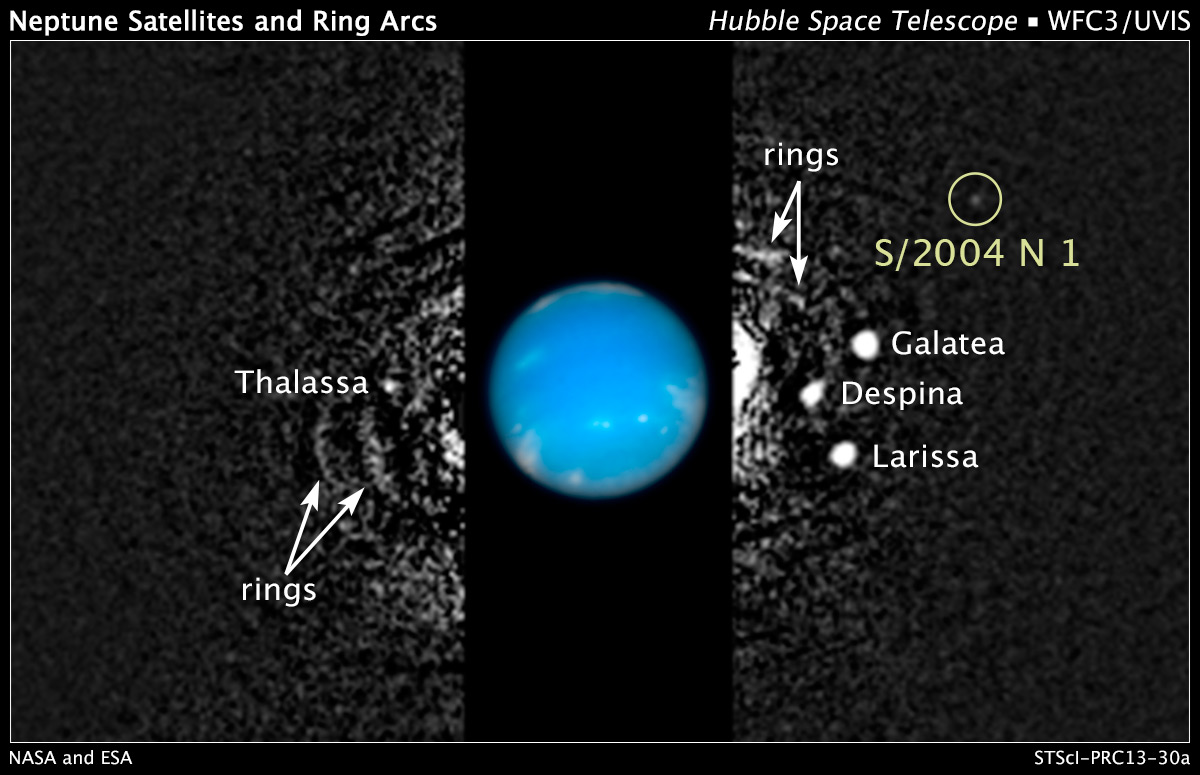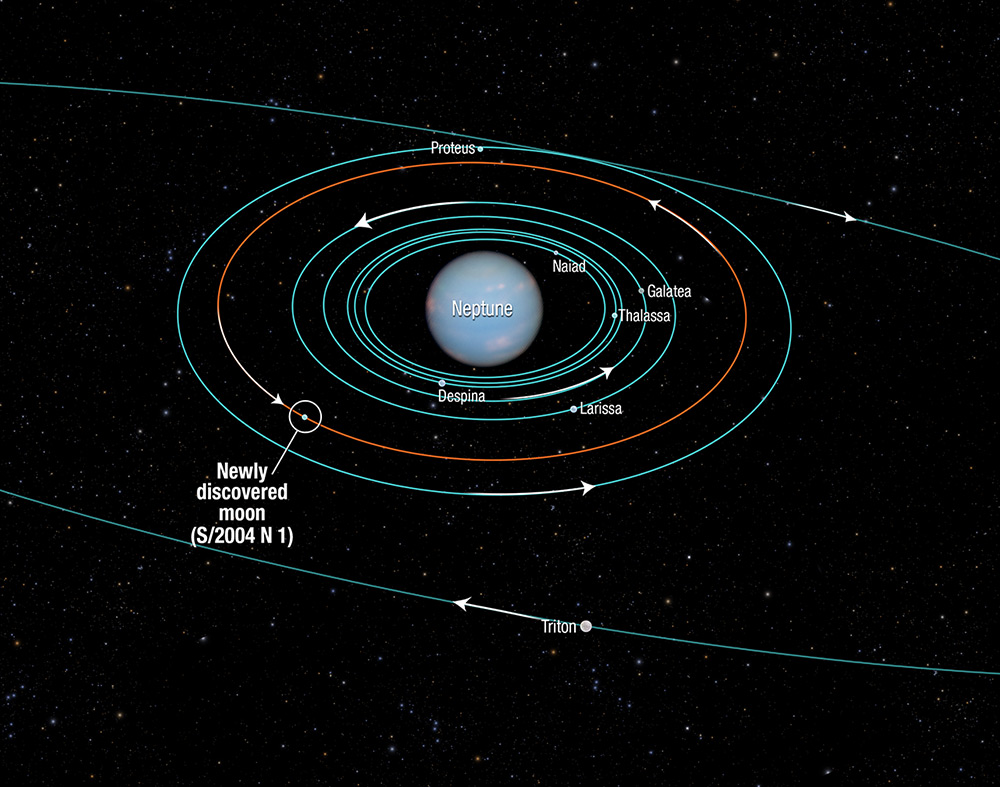
NASA’s Hubble Space Telescope (HST) has discovered a previously unseen moon orbiting the planet Neptune, which is (now) the most distant world from our Sun. This moon is the 14th known satellite to circle the giant blue-green planet, which is characterized by some astronomers as an “ice giant.” Neptune became the most distant planet in our Solar System when the International Astronomical Union demoted Pluto to its current “dwarf planet” classification.
The moon has been designated S/2004 N 1. It was discovered by the Search for Extraterrestrial Intelligence (SETI) Institute’s Mark Showalter on July 1, as he studied the faint rings around the planet. Showalter tracked a white dot that appears repeatedly in more than 150 archival photos of Neptune taken by the HST from 2004 to 2009. He observed that the dot was about 65,400 miles away from the planet in between the orbits of moons Larissa and Proteus. This “dot” turned out to be S/2004 N 1. Showalter then plotted the moon’s orbit around Neptune (it was found to circle the planet approximately every 23 hours).
The moon is so faint and tiny it even escaped detection by NASA’s Voyager 2 spacecraft, which flew by Neptune in 1989. It is not visible to the naked eye, as it is estimated to be 100 million times fainter than the faintest star able to be viewed from Earth. It is Neptune’s smallest known moon, estimated to be merely 12 miles across.

“The moons and arcs orbit very quickly, so we had to devise a way to follow their motion in order to bring out the details of the system. It’s the same reason a sports photographer tracks a running athlete—the athlete stays in focus, but the background blurs,” Showalter said about how he made this discovery.
The HST, which is a cooperative project between NASA and the European Space Agency (ESA), has been in operation since being deployed by the Space Shuttle Discovery in 1990. Managed by the Goddard Space Flight Center and operated by the Space Telescope Science Institute, it continues to make new discoveries and advances in the field of astronomy.
As mentioned above, the Hubble Space Telescope was launched into orbit aboard Discovery on STS-31 from Kennedy Space Center’s Launch Complex 39B in Florida on April 24, 1990. The spacecraft has been on orbit for more than 23 years, and some five shuttle missions have returned to Hubble to both repair and upgrade the orbiting observatory.
Want to keep up-to-date with all things space? Be sure to “Like” AmericaSpace on Facebook and follow us on Twitter: @AmericaSpace



